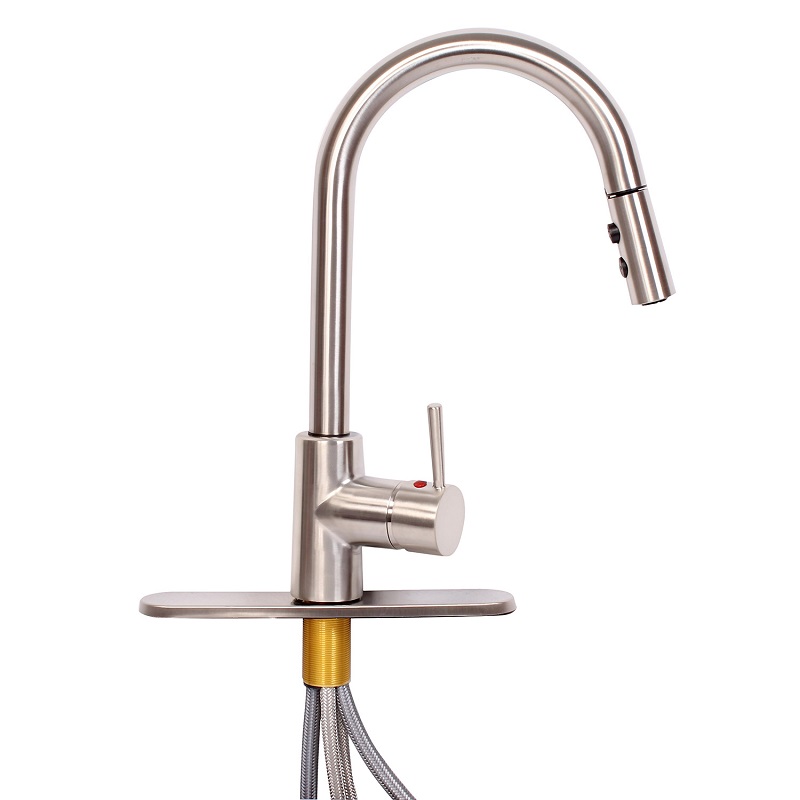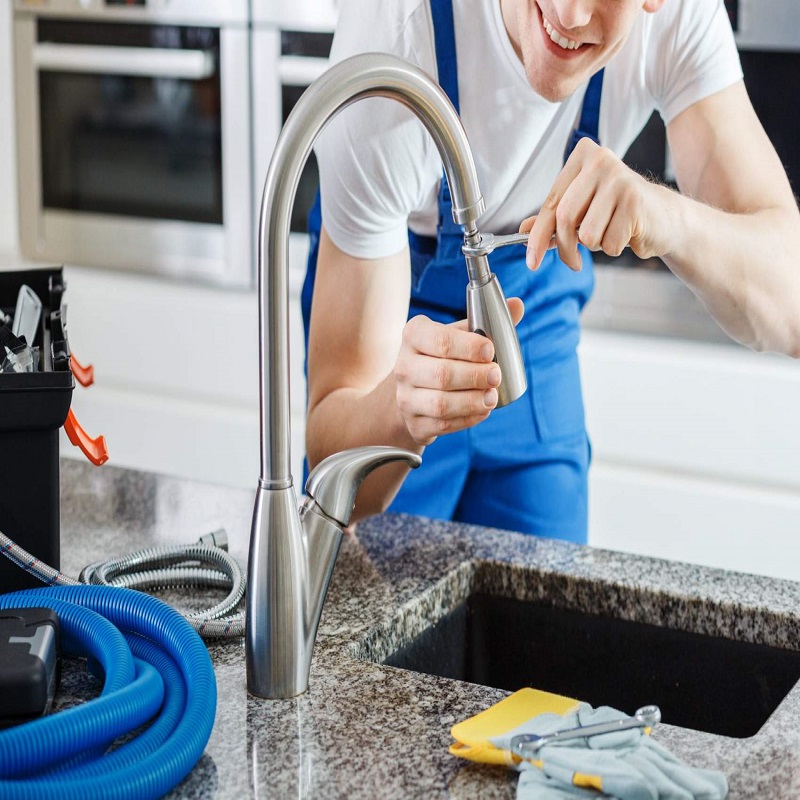How to replace faucets? Replacing a faucet is a common home improvement project that can enhance the functionality and aesthetics of a kitchen or bathroom. Whether you are looking to upgrade an outdated faucet or address a leaky or malfunctioning one, knowing how to replace faucets is a valuable skill. In this step-by-step guide, we will walk you through the process of replacing faucets, covering the necessary tools, preparation, dismantling the old faucet, installing the new faucet, and ensuring a proper seal. Let’s dive into the world of faucet replacement and elevate your kitchen or bathroom spaces.

Gather the Necessary Tools:
Before beginning the faucet replacement process, gather the necessary tools. Common tools include an adjustable wrench, basin wrench, pliers, screwdriver, silicone caulk, plumber’s tape, and a bucket or towel for catching water. Additionally, ensure you have a replacement faucet that matches the existing installation or the new design you desire.
Preparation:
Start by turning off the water supply to the faucet. Locate the shut-off valves located beneath the sink for individual hot and cold water lines. Turn the valves clockwise until they are fully closed. Before proceeding, test whether the water supply has been shut off by attempting to turn on the faucet.
Dismantling the Old Faucet:
To remove the old faucet, follow these steps:
- If applicable, disconnect the sprayer hose from the faucet. This is typically done by unscrewing the fitting or using pliers to disconnect the connection.
- Use an adjustable wrench to loosen and disconnect the water supply lines from the shutoff valves and the faucet. Place a bucket or towel underneath the connections to catch any residual water.
- Remove any additional mounting hardware, such as nuts or brackets, that secure the faucet to the sink or countertop.
- Carefully lift the old faucet out of the sink or countertop, avoiding any contact with surrounding fixtures or surfaces.
Clean and Prepare the Sink:
Once the old faucet is removed, clean the area thoroughly. Remove any mineral deposits or old caulk using a gentle cleanser and a brush. Ensure the surface is dry and free of debris before proceeding.
Installing the New Faucet:
To install the new faucet, follow these steps:
- Follow the manufacturer’s instructions to assemble the new faucet, including any accompanying parts or gaskets. Apply plumber’s tape or thread sealing tape to the male threads of the faucet connections.
- Position the new faucet through the mounting holes in the sink or countertop, ensuring it is centered and aligned with the other fixtures.
- From underneath the sink, thread the mounting nuts or washers onto the faucet tailpieces and tighten them securely by hand. Use an adjustable wrench or basin wrench to make final adjustments and ensure a snug fit, being careful not to overtighten and damage the fixture or sink.
- Connect the water supply lines to the corresponding hot and cold water inlets on the faucet. Hand-tighten the connections, and use an adjustable wrench or pliers to make final adjustments, ensuring they are secure but not over-tightened.
- If applicable, reconnect the sprayer hose to the new faucet using the appropriate connections or fittings.

Ensuring a Proper Seal:
To prevent water leaks and ensure a proper seal, follow these steps:
- Apply a thin, continuous bead of silicone caulk around the base of the faucet where it meets the sink or countertop. Smooth the caulk with your finger or a caulk tool to create a watertight seal.
- Test the new faucet by turning on the water supply and checking for any leaks. Monitor the connections and faucet for drips or moisture. If any leaks are detected, tighten the affected connections gently until the leak stops.
Clean and Test the Faucet:
Clean the new faucet with a soft cloth, and check for any residual debris or marks. Turn on the water supply and test the new faucet by running both hot and cold water. Confirm that the water flows smoothly and there are no leaks or drips.
Finalize the Installation:
Once the new faucet is functioning properly and there are no leaks, clean up any leftover debris or water around the sink or countertop. Dispose of any old parts or packaging appropriately. Enjoy your newly installed faucet and the enhanced functionality and aesthetics it brings to your kitchen or bathroom.
Importance of replacing faucets
Replacing faucets is an essential aspect of home maintenance that often goes overlooked. However, the importance of replacing faucets should not be underestimated. Faucets serve as crucial fixtures in kitchens and bathrooms, providing water for daily tasks such as washing dishes, cooking, and personal hygiene. Over time, bathtub faucets can deteriorate, lose functionality, develop leaks, or become outdated in terms of style and efficiency.
Improved Functionality:
Replacing faucets significantly improves their functionality. Over time, worn-out faucets may experience reduced water flow, inconsistent water temperature, or handle malfunctions. Upgrading to a new faucet ensures smooth and precise water control, allowing for effortless adjustment of temperature and flow. Enhanced functionality simplifies everyday tasks, making cooking, cleaning, and personal hygiene more efficient.
Increased Efficiency:
New faucets often come equipped with advanced technologies that promote water efficiency, leading to reduced waste and lower utility bills. Installing faucets with aerators, low flow rates, or touchless sensors helps regulate water output, ensuring water is used economically without sacrificing performance. With increased efficiency, homeowners can contribute to water conservation efforts and enjoy cost savings over time.

Water Conservation:
Replacing outdated faucets plays a crucial role in water conservation. Older faucets, particularly those manufactured before the implementation of modern efficiency standards, often have higher flow rates that waste considerable amounts of water. By upgrading to water-saving faucets, homeowners can make a significant contribution to conserving this precious resource. Water-efficient faucets help reduce water consumption without compromising functionality, making a positive environmental impact.
Leak Prevention and Cost Savings:
Replacing leaky faucets is essential to preventing water wastage and potential damage to the surrounding infrastructure. Even a minor leak can waste a significant amount of water over time, leading to higher water bills and possible water damage to cabinets, flooring, or walls. By replacing old and malfunctioning faucets to drip, homeowners can save money in the long run by reducing water waste and avoiding costly repairs caused by leaks.
Aesthetics and Style Enhancement:
Faucets play a significant role in the overall aesthetics and style of kitchens and bathrooms. Outdated and worn-out faucets can significantly impact the visual appeal of these spaces. Upgrading to new faucets allows homeowners to modernize the look, enhance the style, and coordinate with existing fixtures and decorative elements. Faucets come in a wide range of designs, finishes, and styles, providing versatile options that can transform the appearance of any kitchen or bathroom.
Improved Hygiene:
Replacing faucets can also play a role in improving hygiene in kitchens and bathrooms. Old faucets may accumulate mineral deposits, rust, or develop mold or mildew growth, compromising water quality and cleanliness. New faucets show with modern materials and finishes are easier to clean, resisting stains, mold, and mineral buildup. By installing clean and well-maintained faucets, homeowners can ensure a healthier and more sanitary environment.

Conclusion:
Replacing a faucet can be a rewarding DIY project that brings new life to your kitchen or bathroom. By following this step-by-step guide, you can confidently replace faucets in a precise and efficient manner. Remember to gather the necessary tools, prepare the area, dismantle the old faucet, install the new faucet securely, and ensure a proper seal to prevent leaks. With careful execution, you can successfully replace faucets and enjoy the improved functionality and aesthetics of your upgraded kitchen or bathroom space.
